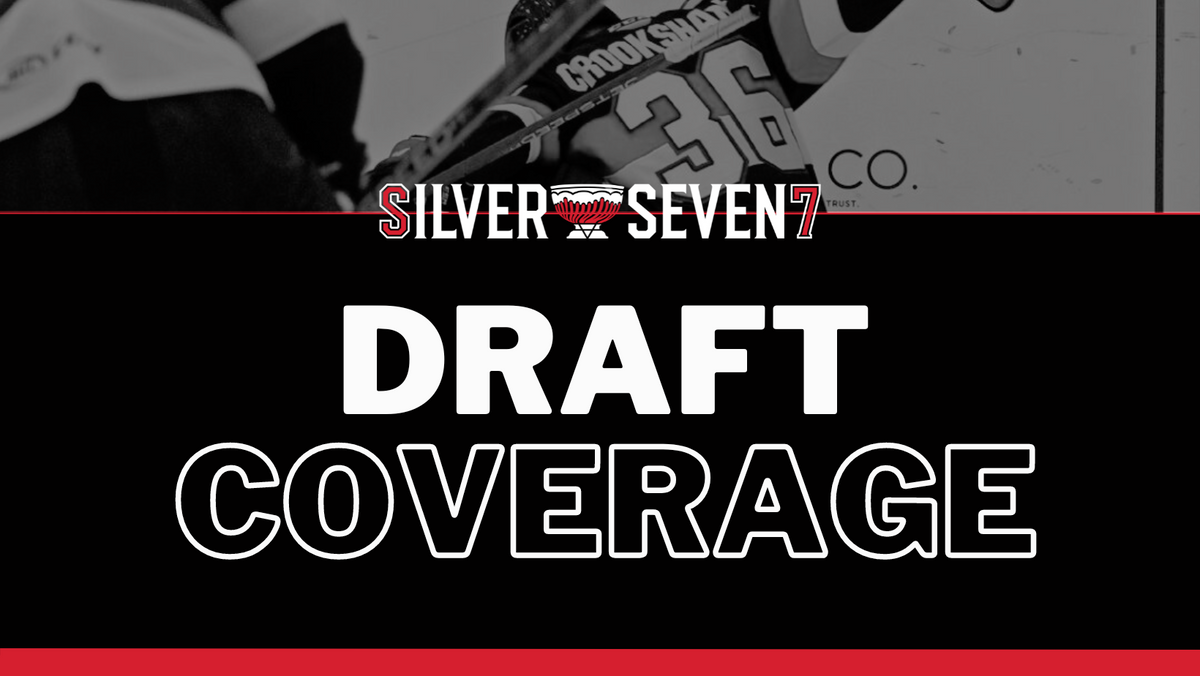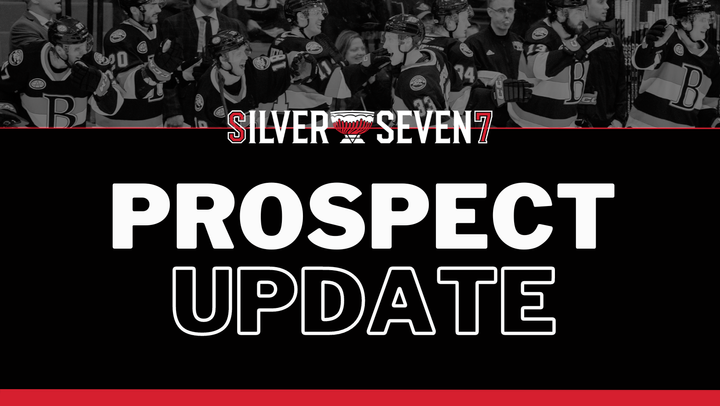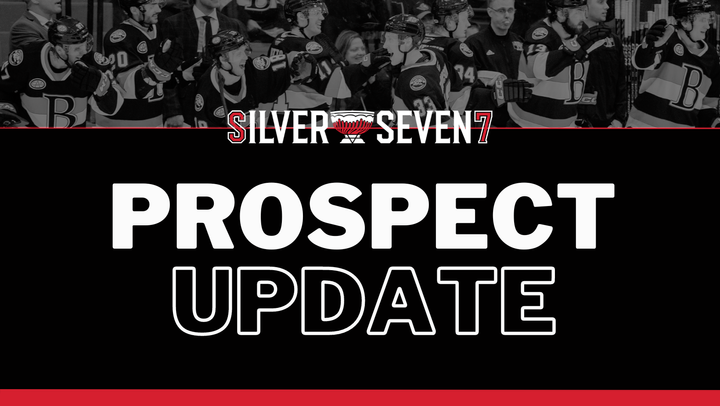Analyzing the Ottawa Senators' Drafting Tendencies
Ahead of the NHL Entry Draft next week, we dive into the data behind Trent Mann & Co.'s draft results since 2017.

Good morning and welcome to Silver Seven's first entry draft-focused piece of the 2023 offseason! With the Ottawa Senators' lack of picks at the top of the draft, we've decided to forego specific player profiles and instead will be running some new takes on the annual event. Of course, should the Senators make their way into one of the top rounds with a trade, we'll pivot and dive deeper into prospects that are projected around that pick.
For now, we'll kick things off by taking a look at Ottawa's drafting tendencies -- specifically under Trent Mann's leadership.
Mann started running drafts for the Sens as the organization’s Chief Amateur Scout back in 2017. Since then, the team has made 43 selections across seven drafts. This includes smaller draft hauls like 2017, where the team walked away with just four prospects, to larger draft hauls like 2020, where Ottawa's amateur scouts were busy, making ten selections.
Preface
What we wanted to do here at Silver Seven was take a look at those drafts and try to pinpoint some trends. It's important to note that GM Pierre Dorion has been very vocal about intangibles like character and compete level, and that's not something that can be easily researched with public data. What we're going to look at today is everything from nationality to size to placement within the draft. What have been the scouts’ tendencies? When has the team been most likely to draft a goalie? Does the amateur scouting group lean towards overagers - players who are in their second or third year of draft eligibility - later in the draft?
From compiling the data, there were some interesting trends that can help us understand, at a high level, what the Sens have been up to on the draft floor for the past seven seasons.
By Nationality
One of the easiest data points to look at is where, geographically, a team tends to pull their prospects from.
It may not surprise you to learn that the vast majority of Ottawa's draft picks since 2017 have been out of North America. After all, of the 711 players listed as active in the NHL for 2022-23, 41.4% were Canadian and 28.4% were American. We know that the NHL primarily pulls from its own backyard, so this isn't groundbreaking information. What's more interesting is where the Sens draft conflicts with the general population of the league. After Canada and the United States, Ottawa's next favourite locale is that of legends Daniel Alfredsson and Erik Karlsson-16.4% of their selections have been Swedish since 2017, while only 9.4% of the league was comprised of Swedes. On the other end, Ottawa has only drafted one Russian player under Mann's lead, which accounts for 2.3% of its selections compared to 5% of the NHL hailing from Russia.
Positionally, the most interesting trend that I found related to nationality was between the pipes. In this timeframe, the Sens have drafted five goalies but 60% of them have been European with Kevin Reidler (Sweden), Leevi Merilainen (Finland) and Mads Søgaard (Denmark) in the pipeline. For every other position, the nationality trend mirrors much of what we see above with North America leading the charge. The organization appears to be more open to European goaltenders than skaters.
By League
There are too many leagues that teams can select from to make for an aesthetically pleasing chart, so I decided to group the smaller leagues into "other" to make it more digestible.
For a team located in Ontario and on the border with Quebec, with direct access to scout in both the OHL and QMJHL, it was interesting to me to see that neither of those leagues were the top sources of Ottawa's picks. In fact, the Sens appear to favour the WHL and USHL over both. As an aside, the players within the USHL camp are, in some cases, US National Team Development Program players who were on their way to college but were drafted out of the program - like Jake Sanderson and Tyler Kleven. In fact, four of the seven players attributed to the USHL are members of the USNTDP.
If you're like me, you're also asking yourself where in the draft these players are plucked from. For example, while the WHL leads the way, are the Sens tapping into this league at the top of the draft? At the bottom? Everywhere? Well, here's the answer: In the first round, the most popular program for the Sens has been the USNTDP, not the WHL. Particularly when you include Brady Tkachuk, who is technically attributed to the NCAA (other) in the above data set, since he did play his freshman year with Boston University prior to being drafted. Of Ottawa's eight first rounders since 2017, half of them have played in this program.
When we get into later rounds, which is where the Sens will be spending the bulk of their resources next week, it's a complete guess as to what will happen. In this timeframe, the Sens have made 21 picks in the fourth round or later. The WHL and QMJHL (four selections each) have been the most popular leagues.
Now, you might be asking yourself why I've grouped a third of these selections into one other category and it's simply because this group is compiled of mostly one-off league selections and there are just so many of them. That 32.6% is comprised of 14 players selected from 10 different leagues. This group does include notable leagues like HockeyAllsvenskan, DEL (hi Tim!) and the NCAA (hi Brady!) but also includes less exciting places like the NAHL, AJHL and GOJHL, where most teams are unlikely to make a bulk of their selections.
By Size
You had to know this one was coming. There's an ongoing joke around Sens Twitter specifically that the Sens love to place a ton of emphasis on size when making their selections. I'm not saying this with certainty but I'm pretty sure Sens Twitter invented the phrase "you can't teach size". But the question is, does the team really draft, on average, larger players than the rest of the league?
The simple answer? Not really.
A recent piece from Horton Barbell took a look at averages by position across the NHL. Their data suggests that the average NHL player is 186cm in height. The average height of a Sens draft pick is just 2cm taller. So, do they draft larger players? Kind of but not enough to say with any kind of certainty that that is the principal strategy. Do the Sens like them big? A bit more than league average, but not enough to say anything really meaningful about their process.
Now, when you break it down by position, there is one size trend of interest and that, once again, is between the pipes. The average NHL goaltender clocks in just shy of 190cm. All five of the netminders who have been drafted by Ottawa since 2017 are taller than this - with an average height of 195cm.
By Age
For this category, I'm not necessarily looking at the literal age. Of course, there's interest in whether or not a prospect is freshly 18 or maybe a few days away from being eligible for a different draft. What I was wondering was how often do the Sens really tap into the overager pool.
In this group of 43 draft picks, the Sens have only drafted overagers seven times - and only one of those instances was before the fourth round, when they took Egor Sokolov with the 61st pick in the 2020 draft. My explanation for this deviation from the norm was that, while they used a second round pick on an overage player, that was Ottawa's sixth selection in that draft. They'd already taken three first rounders and a pair of second rounders - all in their draft year - before grabbing the overager in Sokolov. This is likely just a case of the Sens wanting to get their guy and not wanting to risk waiting until the fourth round, where they typically start selecting overage players.
By Position
Finally, I wanted to take a look at Ottawa's positional tendencies at the NHL Draft. It's one thing to say teams will be balanced in their drafting, ensuring they have enough forwards, defense and goaltenders to have a balanced pipeline but I was curious if the Sens tend to draft certain positions at certain times. Are they more likely to draft a goaltender in a certain round? Do they favour forwards in the first round? What I found was pretty interesting.
With a 23 player roster, you usually have 13 forwards, 8 defenders and 2 goalies. So, naturally, you'd think a team would make roughly 56% of its selections tagged for forwards, with 35% being defenders and 9% goalies. With the Sens, this is mostly true! In their selections, Ottawa has used 60% of their picks on forwards, 28% on defenders and 12% on goalies.
The more interesting piece is when these selections occur. While they have roughly balanced their picks based on positional inventory - whether intentional or not - there's some favouritism at the top of the draft when it comes to blueliners. Yes, the Sens have selected defenders with 28% of their picks, but when you look at the players they've selected in the first two rounds, 39% of them have been defenders - including three first rounders in Lassi Thomson, Jacob Bernard-Docker and Jake Sanderson. Has this strategy been successful? The Sanderson pick looks great right now, but JBD and Thomson have yet to establish themselves as bonafide NHLers. The jury might still be out here.
The 2023 NHL Entry Draft
As of writing this piece, the Ottawa Senators have five selections to make. They have one fourth, one fifth and three seventh round picks in the cupboard. What this means is that, right now, looking at who Ottawa selects at the top of the draft doesn't mean a whole lot.
What we also have to keep in mind ahead of next week is that if the Sens don't make any moves for 2023 draft capital, we should lower our expectations for draft pick success basically to the floor. A few years back, Jokke Nevalainen took a deep dive into NHL draft pick probabilities where the primary measurement of success was games played. What Nevalainen's work found was that there's an understandable sharp drop off from first to second round and then a steady decline as the draft continues. This work has shown that only 22% of fourth round picks end up playing over 100 games. Only 15% of fifth rounders hit this milestone while just 11% of seventh rounders do. With Ottawa's current inventory, we shouldn't expect much to come out of the 2023 draft.
That being said, what are some of the late round trends and what can we reasonably expect from these five picks with Mann heading up his eighth draft with the club?
First, they're probably selecting an overager at some point. As mentioned, the Sens have historically waited until the fourth round to dip into that candidate pool. Of their 21 selections made in the fourth round or later since 2017, almost a third of them have been overagers - including the likes of Drake Batherson, Mark Kastelic and Cole Reinhardt.
In later rounds, the Sens also lean extra heavily on North Americans. Earlier, we concluded that roughly 66% of Ottawa's picks since 2017 have been from Canada or the United States. When looking at rounds four and beyond, this skyrockets to 81%, as the Sens have only made four selections outside of North America at this stage in the draft. Funnily, if they go outside of North America, it'll be to Sweden as all four of those non-North American picks they've made have hailed from Alfie's home.
The final identifiable trend late in the draft is positional. Of these 21 selections, 66% have been forwards.
So, if we're putting money on the table when Ottawa steps up to the microphone for their first selection of the 2023 draft, I'd place a bet on a forward from North America, with a half decent chance they had been passed over in a previous draft.



